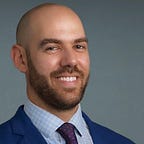The “herd immunity strategy” isn’t part of a scientific debate about COVID-19. It’s a well-funded political campaign.
Abby Cartus, PhD candidate in epidemiology, University of Pittsburgh and Justin Feldman, ScD, Health & Human Rights Fellow at the Harvard FXB Center
A small number of scientists argue that the best way to respond to the COVID-19 pandemic is to lock down older and sicker people while letting those who are young and healthy get infected. These scientists claim widespread infection will protect society as a whole by building herd immunity.
This “herd immunity” strategy is not part of a legitimate scientific debate. It has been rejected by key scientific leaders in the US, UK, Germany, and World Health Organization. Proponents of “herd immunity” haven’t tried to address even basic questions about the strategy, such as how many households would need to be locked down or how many people would still get sick from endemic COVID-19 once herd immunity was achieved.
The proposal is not evidence-based and does not reflect even a minority view in the scientific community. Rather, it appears to be the product of an organized, well-funded political campaign in the US and UK. The UK campaign has been described elsewhere. In the US, the campaign appears to be largely coordinated by two right-wing think tanks — the Hoover Institution and the American Institute for Economic Research — in coordination with the Trump administration. Key elements of this campaign have included:
- Appointing the Hoover Institution’s Scott Atlas as an official advisor to the White House Coronavirus Task Force in August. Atlas has long alternated between supporting a herd immunity strategy and denying he supports it. When 100 Stanford infectious disease scientists wrote an open letter denouncing Atlas’s unscientific views, he threatened to sue them.
- Coordinating a media blitz whose public face includes three scientists: Jay Bhattacharya (a Stanford professor who is a colleague of Atlas and former fellow at the Hoover Institution), Martin Kulldorff (a statistician at Harvard Medical School), and Sunetra Gupta (an epidemiologist at Oxford). We’ve documented more than 50 interviews, public appearances, and published commentaries advocating the herd immunity strategy from these three individuals alone. The vast majority came after Atlas’s White House appointment on August 10, 2020.
- Convening an in-person meeting at the American Institute for Economic Research campus in Great Barrington, Massachusetts with Bhattacharya, Kulldorff, and Gupta. There, the three signed the “Great Barrington Declaration”, which argues for the herd immunity strategy (rebranded as “Focused Protection”). AIER registered the domain gbdeclaration.org, where people can sign the declaration. The Guardian has since reported that many of the signatories (including “Dr. Johnny Bananas”) are obviously fake.
- Convening a meeting between the White House Coronavirus Task Force and Bhattacharya, Kulldorff, and Gupta to cap off the Great Barrington Declaration event. In relation to the meeting, Atlas stated, “Their targeted protection of the vulnerable and opening schools and society policy matches the policy of the President and what I have advised”.
- Advising state and local politicians, amid rising COVID-19 incidence, to avoid further restrictions aimed at lowering case counts. This has included public meetings with Florida Governor Ron DeSantis, San Diego County Supervisor Jim Desmond, and the Arizona state legislature. DeSantis cited his roundtable discussion as a pretext for not implementing further COVID-19 protections.
We believe the herd immunity campaign is primarily designed to create an illusion of scientific disagreement. It is meant to cast doubt on the value of public health interventions that have been proven in numerous countries to suppress SARS-CoV-2 transmission. These measures can be costly for businesses, and can also lead to demands to strengthen the social safety net programs these think tanks have spent decades opposing.
The herd immunity campaign follows a playbook that has been used to protect corporate interests from accountability in the past. We think this blurb describing Naomi Oreskes and Erik Conway’s 2010 book Merchants of Doubt says it all:
Naomi Oreskes and Erik Conway explain how a loose–knit group of high-level scientists, with extensive political connections, ran effective campaigns to mislead the public and deny well-established scientific knowledge over four decades. In seven compelling chapters addressing tobacco, acid rain, the ozone hole, global warming, and DDT, Oreskes and Conway roll back the rug on this dark corner of the American scientific community, showing how the ideology of free market fundamentalism, aided by a too-compliant media, has skewed public understanding of some of the most pressing issues of our era.
Finally, we believe there should be some form of accountability for the scientists who are using their credentials to further this campaign. Stanford, Oxford, and Harvard all have policies around disclosing conflicts of interest, and Harvard Medical School has restrictions on outside activities that consume more than 20% of one’s time. We call on administrations at these universities to ensure that their policies are being followed and that the public is aware of the funding sources behind the campaign.
October 17, 2020 updates:
- Trump ‘officially adopts’ the Great Barrington Declaration
- Public health organizations and researchers put out consensus statements in opposition to the GBD
- The New York Times reports that, one month before Bhattacharya presented at the Hoover Institution on the public’s ‘overreaction’ to COVID-19, a Trump advisor told the institution’s board in a private briefing that the pandemic would be worse than the administration was publicly stating
